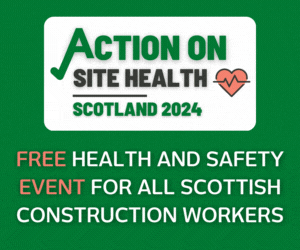Derelict and vacant land decreases by 1.2 per cent
 The total amount of derelict and urban vacant land in Scotland decreased by 129 hectares or 1.2 per cent from the previous year to 10,874 hectares in 2014, according to newly released statistics.
The total amount of derelict and urban vacant land in Scotland decreased by 129 hectares or 1.2 per cent from the previous year to 10,874 hectares in 2014, according to newly released statistics.
Figures revealed today by Scotland’s Chief Statistician found that the amount of land brought back into use of 319 hectares was greater than the 180 hectares of new land reported by local authorities. This alongside some changes in sizes of existing land has contributed to the overall decrease in derelict and urban vacant land.
Of the 10,874 hectares of derelict and urban vacant land recorded in the 2014 survey, 2,366 hectares (22 per cent) were classified as urban vacant and 8,509 hectares (78 per cent) were classified as derelict
Since 2008, there has been a decrease of 459 hectares (4 per cent) in the total amount of derelict and urban vacant land recorded in the survey, from 11,333 hectares in 2008 to 10,874 in 2014.
The local authority with the highest amount of derelict and urban vacant land in 2014 is Highland, containing 1,373 hectares (13 per cent of the Scotland total). North Ayrshire has the second highest amount with 1,341 hectares (12 per cent), North Lanarkshire is third with 1,297 hectares (12 per cent), followed by Glasgow City with 1,171 hectares (11 per cent).
28.9 per cent of Scotland’s population are estimated to live within 500 metres of a derelict site in 2014, this compares with an estimate of 29.7 per cent for the previous year.
56 per cent of people living in the most deprived decile in Scotland are estimated to live within 500 metres of derelict land, compared to 12 per cent of people in the least deprived decile.
For those sites where the previous use is known, 24 per cent of derelict land recorded in 2014 had been previously used for defence (1,964 hectares), 23 per cent for mineral activity (1,851 hectares), and a further 21 per cent for manufacturing (1,747 hectares). The most common previous use for urban vacant land, where previous use is known, was agriculture (20 per cent, or 403 hectares) and the second most common previous use was residential development (19 per cent, or 384 hectares).
3,355 hectares (35 per cent) of derelict and urban vacant land in 2014 is reported to be developable in the short term, with an expectation of development within five years. A total of 900 hectares (9 per cent) of land is seen by local authorities as being uneconomic to develop or is viewed as suitable to reclaim for a ‘soft’ end use (i.e. non-built use).
The most common new use for derelict land was residential, with 30 per cent (60 hectares) of the derelict land that was brought back into use since the previous survey reclaimed for this purpose. The second most common new use was for agriculture, accounting for 19 per cent (38 hectares). For urban vacant land the most common new use was residential, with 54 per cent (63 hectares) of the land reclaimed for this purpose.
Of the 180 hectares of new derelict and urban vacant land reported by local authorities, the most common previous land uses were manufacturing (25 hectares), community and health (24 hectares), residential (22 hectares), storage (20 hectares), and education (19 hectares).
Of the 319 hectares of land reused in 2014, a total of 103 hectares involved some form of public funding, either a full or partial contribution.
Since its inception in 2005/06, the Scottish Government’s Vacant and Derelict Land Fund has contributed (either fully or partially) to the reuse of 328 hectares (in total) of previously vacant and derelict land across Dundee City, Glasgow City, Highland, North Lanarkshire and South Lanarkshire.
A number of opencast coal mining sites were affected by the liquidation of Scottish Coal and ATH Resources in 2013 across sites in East Ayrshire, Fife and South Lanarkshire. In line with definitions underpinning the survey, these sites would not in general be expected to be reported in the survey results if authorities are pursuing restoration bonds or if negotiations are still on-going in terms of the future use of a site. For this reason, at this stage, South Lanarkshire and Fife have chosen not to add their sites to the SVDLS register and so their sites are not included in the survey results. East Ayrshire have submitted information on 13 sites with a total area of 4,513 hectares, however for the reasons outlined above these sites have not been included in this year’s survey results. If at a later stage it becomes apparent that some of these sites fall into the category of derelict sites then future survey results will take account of this.




















